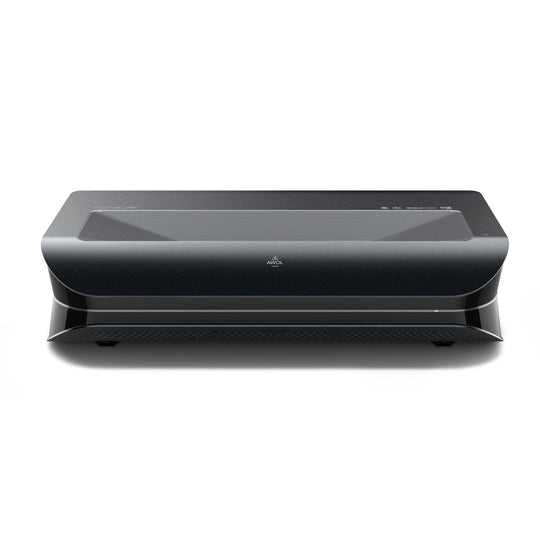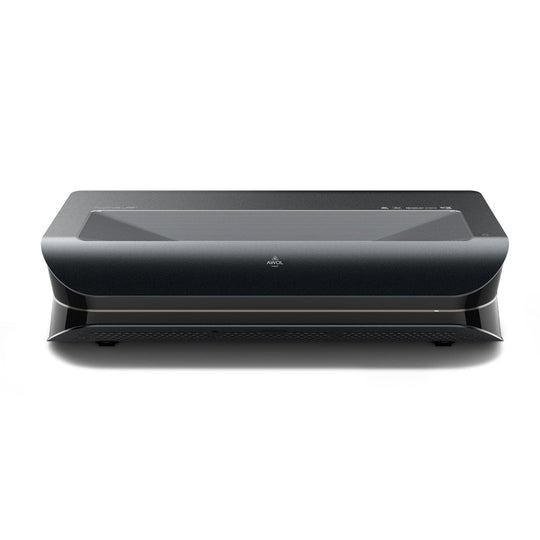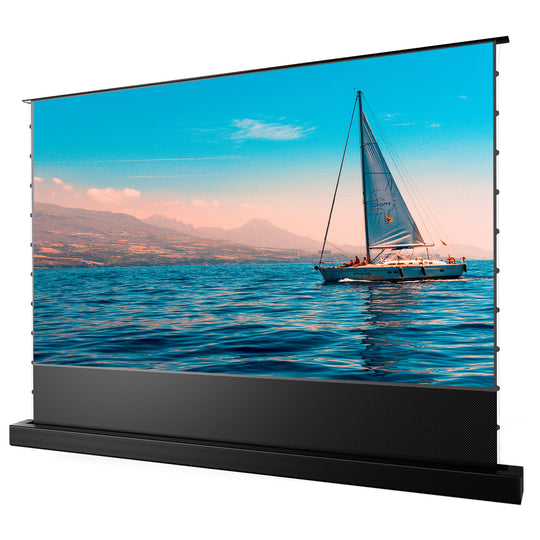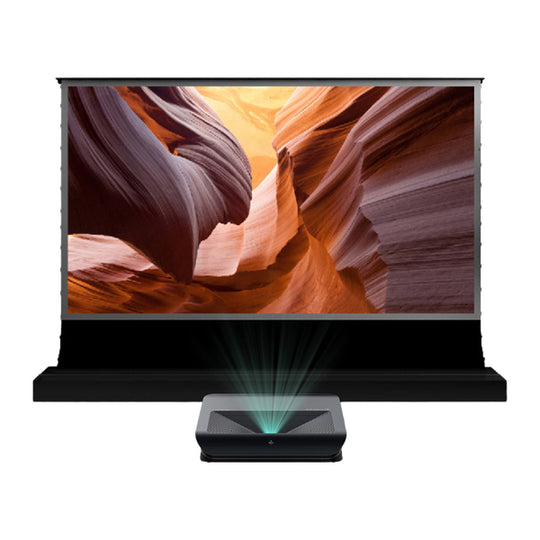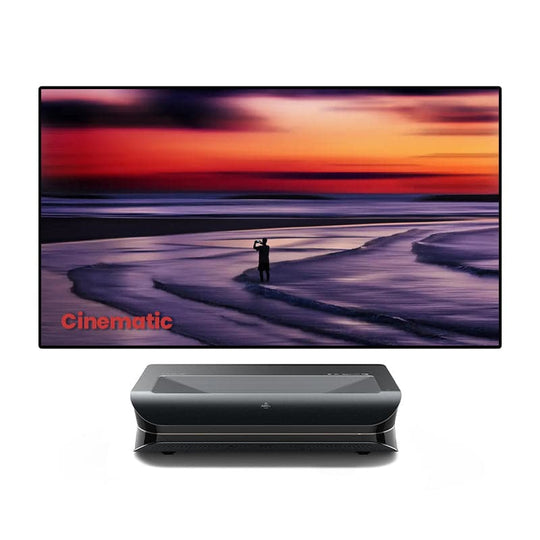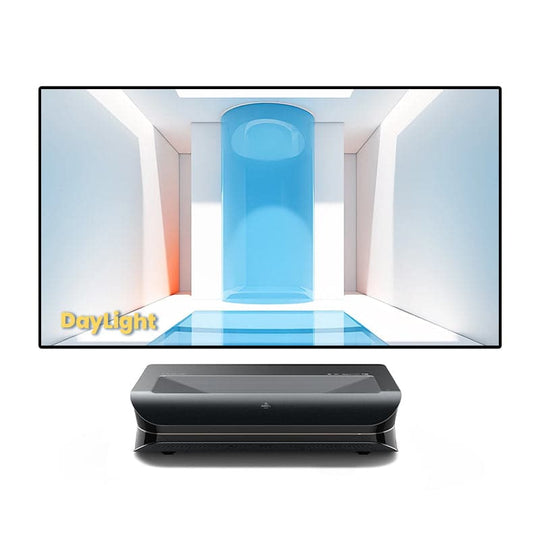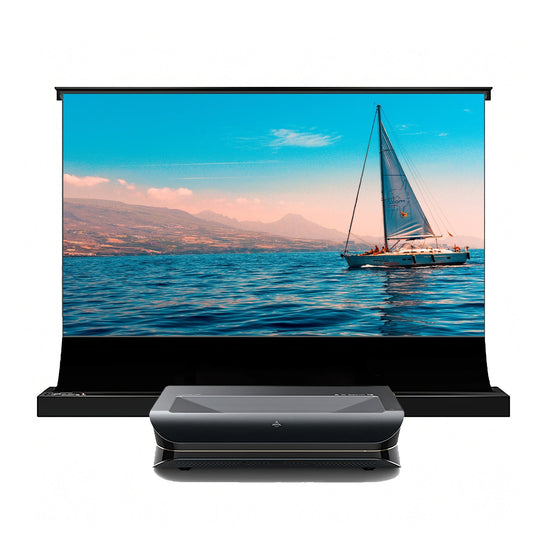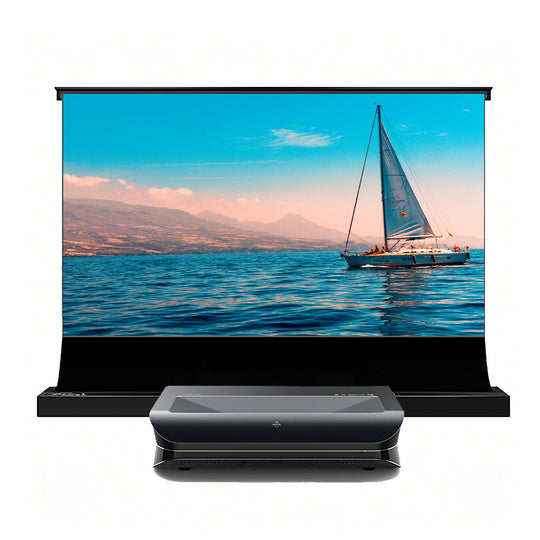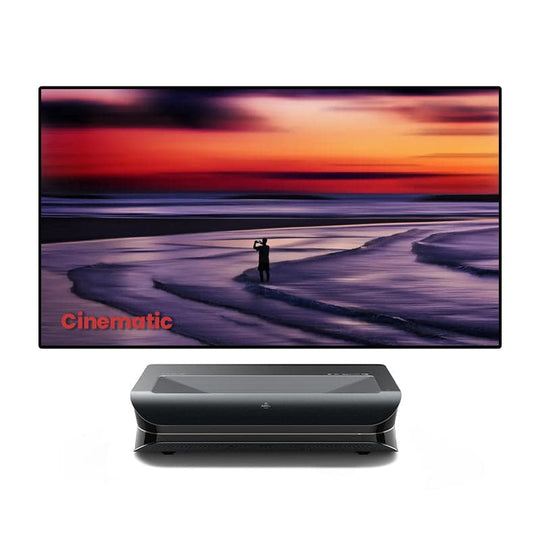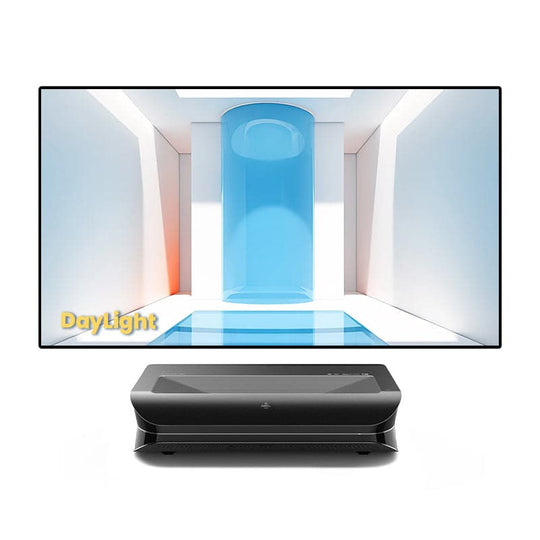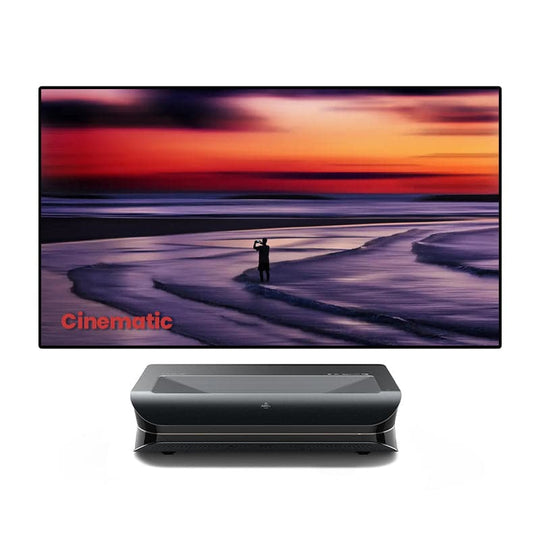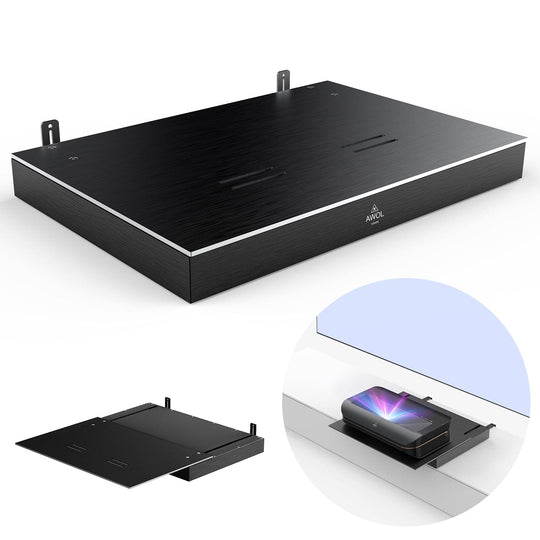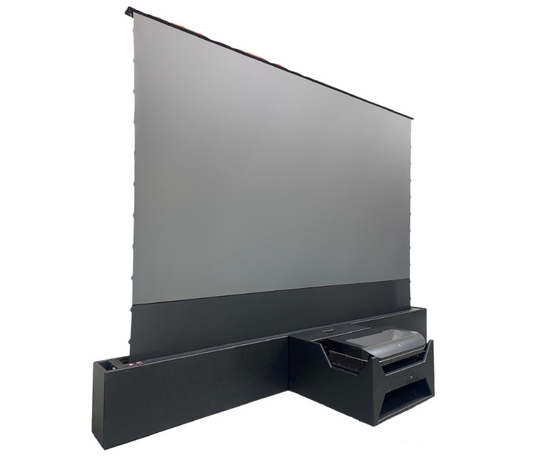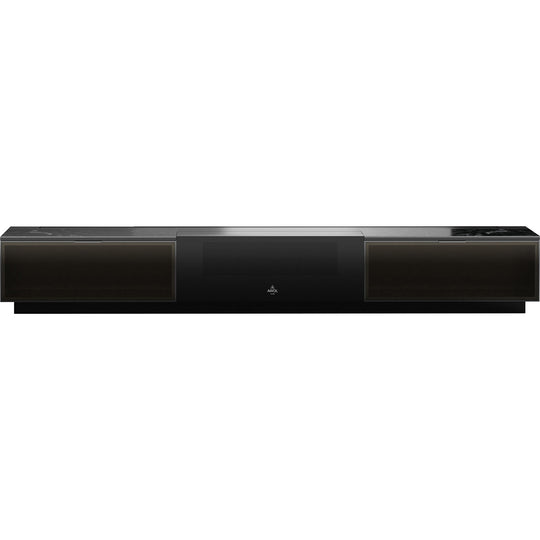Whether you're choosing a projector or upgrading your home lighting, understanding lumens is crucial. This article looks at the different lumen measurements of projectors —ANSI lumens, ISO lumens, LED lumens and CVIA lumens — each defined by different standards and used in certain contexts to inform us of how bright a projector really is.
What is lumen?
Lumen is the standard unit for measuring the total amount of visible light emitted by a light source.
Specific, lumen, symbolized as lm, is the SI unit of luminous flux, a measure of the total amount of visible light emitted by a light source per unit of time. The concept is based on the sensitivity of human vision, which varies at different wavelengths of light. Lumens are a standardized method of quantifying the perceived brightness of a light source that covers all wavelengths that the human eye can see.
The measurement of lumens is based on the photopic visual sensitivity of the human eye, which is most sensitive to light in the green-yellow region of the spectrum (around 555 nm). The amount of light in lumens is calculated by integrating the power emitted by a light source across the visible spectrum, weighted by the luminous efficacy function V(λ). This function is defined by the International Commission on Illumination (CIE) and reflects the average sensitivity of the human eye to different wavelengths.
Lumens are often used to indicate the brightness of various lighting products, including light bulbs, lamps and projectors. In lighting technology, lumen output helps to determine the efficiency of light bulbs (lumens per watt), which is an important indicator of energy efficiency. In projection technology, lumens measure the brightness of projectors and indicate how well a projector works under different lighting conditions and environments.
ISO lumens
ISO lumens are defined by the International Organization as part of the ISO 21118 standard, which specifies how the brightness of projectors should be measured. This standard ensures that the luminance of projectors is assessed in a consistent way, allowing accurate comparisons between different brands and models. ISO lumens measure the total visible light output of a projector and are a reliable indicator of how brightly a projector can illuminate a standard gain 1 white screen.
When measuring ISO lumens, light is projected onto a standard white screen and the average brightness is calculated at several predefined points on the screen. This method aims to replicate realistic viewing conditions and provides a measurement that can be trusted in different environments and setups. The specific protocol involves using a standard white test pattern divided into nine equal rectangles, measuring the luminance at the center of each rectangle and then averaging these values to obtain the final ISO lumen rating.
ISO lumens are generally better accepted in international markets, while ANSI lumens are often better known in the United States.
ANSI lumens
ANSI lumens are a standardized measure used to quantify the amount of visible light a projector can emit. This measurement, defined by the American National Standards Institute, provides a clear and consistent way to compare the brightness of different projectors. Unlike other lumen measurements, which can vary in their methodology, ANSI lumens provide a reliable measure of projector performance under standardized conditions.
The method for measuring ANSI lumens is precise and designed to mimic real-world usage as closely as possible. It involves projecting a white image onto a standard gain 1 white screen in a completely dark room and measuring the brightness at nine specific points on the screen. These points include the center, four corners and four center points at the edges. The average of these measurements gives the ANSI lumen value. This method ensures that the measurement takes into account the variations across the entire image and provides a realistic indicator of the projector's performance.
ANSI and ISO lumens are almost equivalent standards, but the small differences in the measurement methods result in different values.
When comparing the brightness values of projectors, it's important to note that ANSI lumens are usually higher than ISO lumens. According to the conversion ratio described in ISO standard 21118, the ratio between ANSI lumens and ISO lumens is 1:0.8, which means that 1 ANSI lumen corresponds to 0.8 ISO lumens. So if the brightness of a projector is given in ANSI lumens, you can convert it to ISO lumens by multiplying the ANSI lumens by 0.8. For example, a projector with a brightness of 2000 ANSI lumens would correspond to 1600 ISO lumens using this conversion ratio.
CVIA lumens
CVIA Lumen is a unit of measurement defined by the China Video Industry Association (CVIA) in October 2022 to standardize the brightness of projectors sold in China. This standard is tailored to the specific needs and preferences of the Chinese electronics market and ensures that all projectors meet a certain level of quality and performance. The CVIA lumens help maintain consistency in product specifications and consumer expectations in the fast-growing Chinese electronics landscape and are used by Dangbei, JMGO, Hisense, Harqu and other China-based projector manufacturers.
The method of measuring CVIA lumens is similar to other international standards such as ANSI and ISO lumens, but has been adapted to more accurately measure the brightness of projectors specifically for video content. Typically, a white image is projected from the projector onto a screen and the light intensity is measured at several fixed points on the screen. The average of these measurements gives the CVIA lumen value. This method ensures that the measured brightness reflects the performance of the projector under real-life conditions that are common in Chinese environments. For this reason, the CVIA values are usually lower than the ANSI values for the same brightness.
CVIA lumens are much more stringent than ANSI lumens in terms of color accuracy, as they include precise standards for color temperatures and color coordinates.
CVIA lumen values also play an important role in ensuring that projectors manufactured and sold in China comply with local regulations and quality standards.
LED lumens
LED lumens are not a standardized measurement, but are used by some LED projector manufacturers. This measurement is derived from the Helmholtz-Kohlrausch (HK) effect, which states that the human eye perceives highly saturated colors as brighter than they actually are. Simply put, LED lumens reflect the brightness perceived by the human eye rather than an objective measure of luminance. This approach takes into account the subjective visual impact of bright colors and provides the viewer with a more accurate representation of a screen's brightness.
As a rule, the brightness value of LED lumens can be converted into ANSI lumens using a conversion factor. For every 1,000 LED lumens, you can expect approximately 417 ANSI lumens. This conversion is based on the following formula: LED lumen value ÷ 2.4 equals ANSI lumens.
For example, a projector with an LED lumen value of 2000 lumens corresponds to approximately 800 ANSI lumens.
Summary
ISO lumens: Similar to ANSI, but with potentially different environmental conditions or calculation methods, often used internationally.
ANSI lumens: The American standard we use from 1992 for brightness in the projection industry.
CVIA lumens: A new standard from the China Video Industry Association, which is led by major Chinese projector brands.
LED lumens: Specifically for LED projectors, taking into account the unique characteristics of LED light sources that can affect perceived brightness.
Example
To understand the differences between these standards when reading the specifications of a projector, here is a hypothetical example with lumen values
If a projector specifies a brightness of 2000 ANSI lumens, this corresponds to the following values:
1600 ISO lumens (÷0.4)
1100 CVIA lumens (÷0.8)
4800 LED lumens (x2.4)
AWOL Vision


